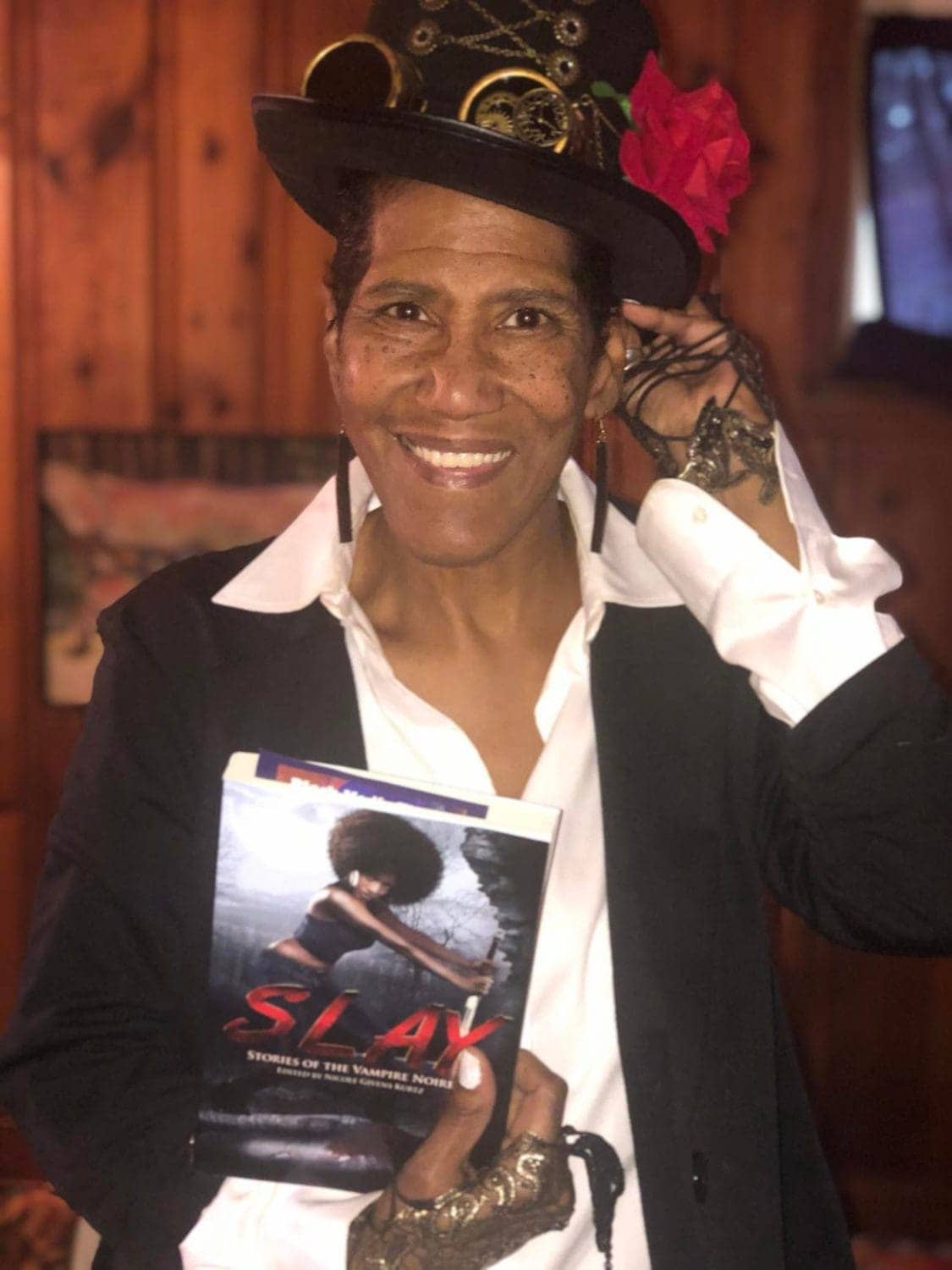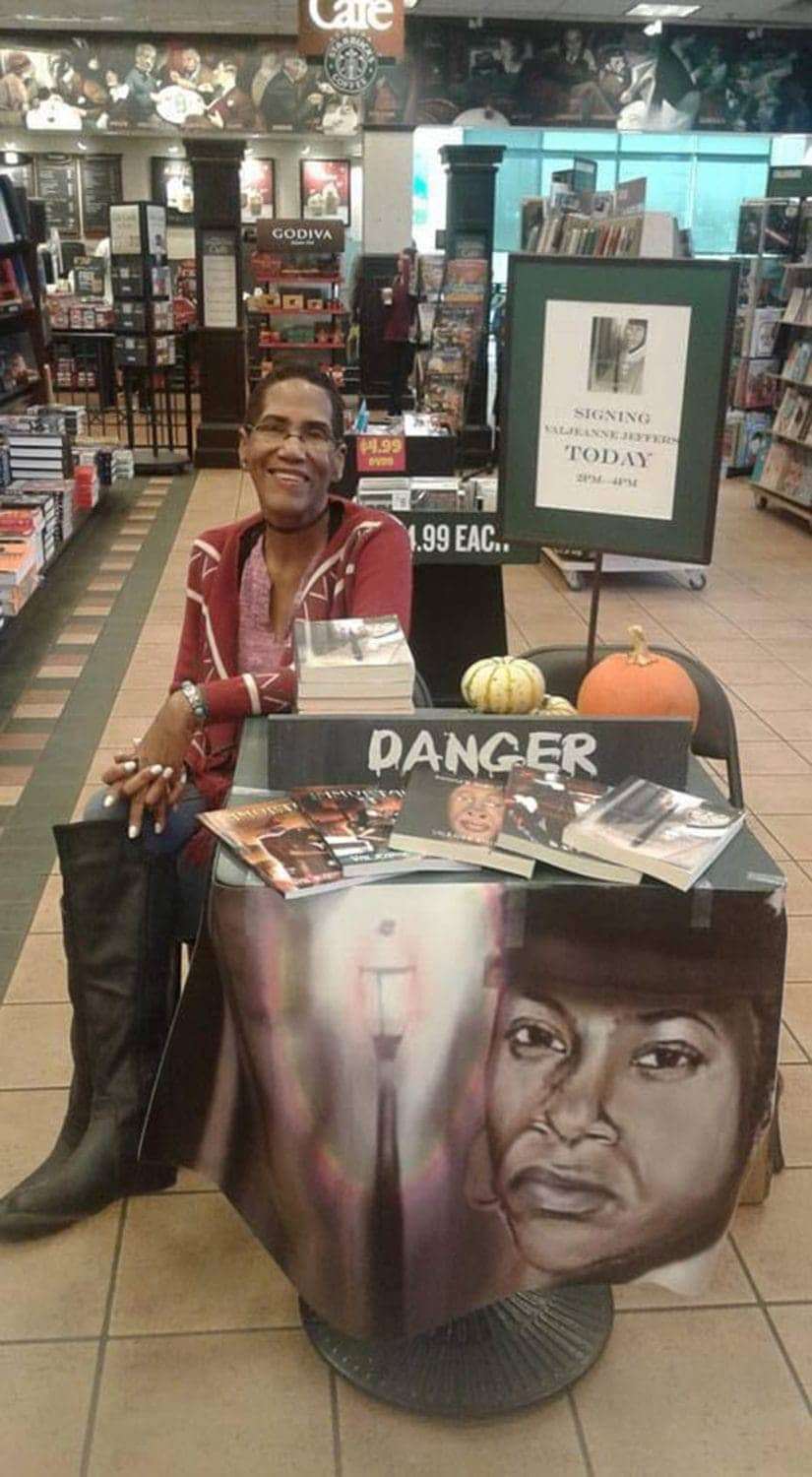
by Sumiko Saulson
Valjeanne Jeffers was a prolific author of Black Speculative Fiction, being not only an African American woman who wrote science fiction, horror and paranormal romance, but crafted uniquely Afrocentric and multicultural worlds within these genres.
For a lot of us, her steamy shifter saga “The Immortal Series,” which debuted in 2009 and spawned three enticing sequels, was our first introduction to the talented writer. The series starts with Karla, a young Indigo healer, who lives in Tundra, a utopian society that has been at peace for 400 years.
She has been dreaming about being a shapeshifter and about romance with two men – a Copper shapeshifter and a demon-zombie. Joseph has also been dreaming of becoming a shapeshifter. The two meet, discover they are werewolves and travel through time to more dystopic versions of Tundra all along the timeline. It is their job to save their society.
Valjeanne had an incredible talent for mixing together romance, erotica and speculative fiction, and wrote compelling sci-fi erotica and paranormal romance – and, like many fine writers, she only grew better with time.
Her work appeared in many anthologies – “Slay: Tales of the Vampire Noire”; “Steamfunk; Griots: Sisters of the Spear; Sycorax’s Daughters”; “The City: A Cyberfunk Anthology; “Black Magic Women: Terrifying Tales by Scary Sisters”; “Blacktastic: Blacktastic Con 2018 Anthology”; “Dark Universe: The Bright Empire”; “Luminescent Threads: Connections to Octavia Butler”; “Blerdrotica I: Sweet, Sexy, and Special Dark”; “Fitting In: Historical Accounts of Paranormal Subcultures”; “The Ringing Ear: Black Poets Lean South”; and the as yet to be released “Blerdrotica II: Couples Therapy.”
She also wrote “The Switch: Clockwork,” a steamfunk crossover with the “Immortal Universe,” “Colony: The Ascension” (a space opera) and “Southern Comfort.”
Valjeanne had a real gift for worldbuilding, and it shined most brightly in her many contributions to the steamfunk genre. The stories in her “Mona Livelong: Paranormal Detective” series deftly combined steamfunk worldbuilding and crime noir with civil rights issues and the paranormal.

Like all of her novels and personal short story collections, they feature the unique Afrocentric artwork of her longtime boyfriend and collaborative partner – co-editor of “Scierogenous” and “Scierogenous II” with her – poet and speculative fiction author Quenton Veal.
Her contribution to “Black Magic Women,” like much of the Jeffers literary universe, takes place in an alternate timeline where the North lost the Civil War, and the free Black citizens of towns like York, North America, and Monterrey, North America, live in a nation that is across the border from a country to the south that is rife with all of the racism associated with the Civil War South.
Steamfunk is an Afrocentric take on the genre steampunk, a science fiction subgenre that marries alternate timelines to a tipping point where technology was largely steambased, in the 1900s. In steampunk, technology remains steam-centered but becomes increasingly complex.
The genre started in the 19th century, when futuristic novels such as “Twenty Thousand Leagues Under the Sea” by Jules Verne (1870) and “The Time Machine” by H.G. Wells (1895)showed future tech based on technology that was at the time contemporary.
The 1999 movie “Wild, Wild West” – based on the old ‘60s show of the same name – starred Will Smith and leaned heavily into the steampunk aesthetic, but Smith’s central role in the cast also made it a work of steamfunk, because contemporary views of African Americans at the time the production was set in were so much a part of the story.
She was a major voice in the steamfunk genre, and possibly the most significant female voice in the genre.
Valjeanne Jeffers was very active on the Black Speculative Fiction convention circuit and the convention circuit at large. I met her when I was putting together 60 Black Women in Horror Fiction, back in 2013. Many of us knew her as an upbeat and encouraging presence who brought light into the lives of all who knew her.
I learned that Valjeanne was sick when I interviewed her for the Horror Writers Association Black History Month Series earlier this year in February. I had to interview her over the phone because she was not well enough to do the interview by email.
She told me that she was really sick and did not know if she was going to be able to pull through. And, I feel like I could have reached out to her more. Life catches up with you, and now she’s gone.
I am extremely grateful that I knew her well enough and that she trusted me enough to let me know and to grant me the honor and privilege of interviewing her over the phone. She asked me if I would do it and I said of course I would.
Valjeanne was one of my earliest writer friends outside of the Bay Area. I worked with her on a lot of wonderful projects. I was honored to be a part of “Scierogenous II.” I was thrilled to have her as a part of “Black Magic Women.”
She was a major voice in the steamfunk genre, and possibly the most significant female voice in the genre – which is predominantly associated with male voices, like Milton Davis and Balogun Ojetade. She was legendary. And I think that she was so down to Earth, so accessible, so easy to talk to that people would often forget this.
Valjeanne is also the main reason why I said that even though I’m not binary, it’s fine for my Black kin to call me sis. Although I will admit that there is another Black writer who calls me sib, and I love that. But when Valjeanne called you sis, you knew you were family to her.
She was a real joy to work with. She edited my book “Warmth.” She was on a panel with me virtually at Clockwork Alchemy in 2021. She was on the Erotic Storytelling Hour several times. She participated in an installment that I put together in Second Life’s rendition of Burning Man in 2021.
She was never afraid to do new and different kinds of things. She had that kind of a vision. She didn’t have to step into Second Life to understand what was going on. She was wonderful.
I feel truly blessed to have had Valjeanne be a part of my life. She was the salt of the Earth.





